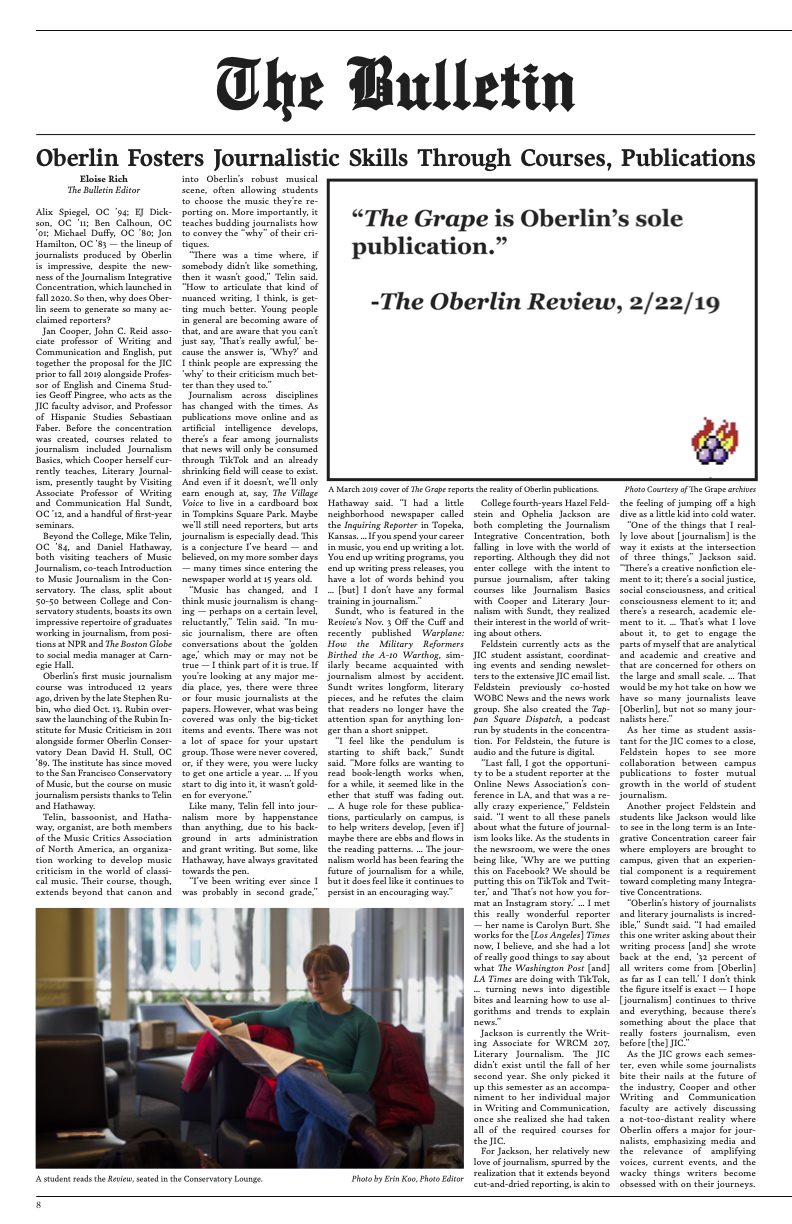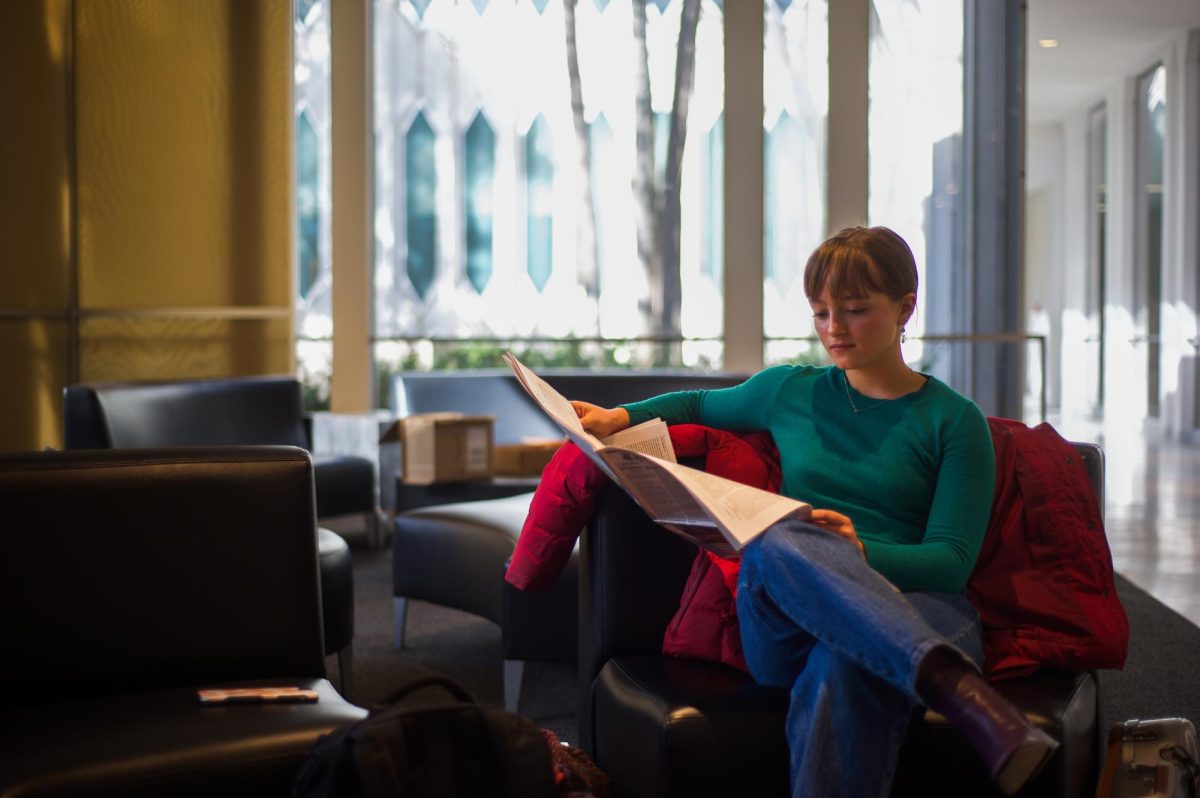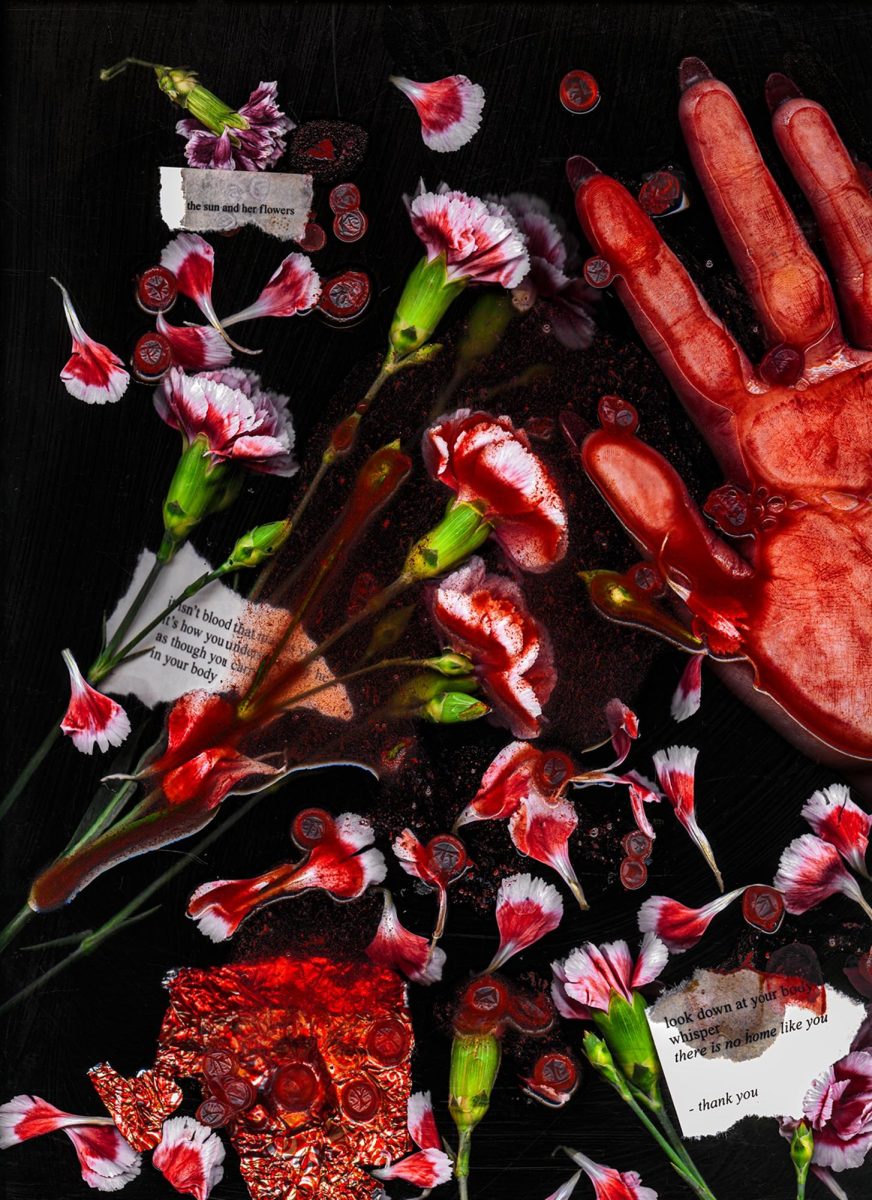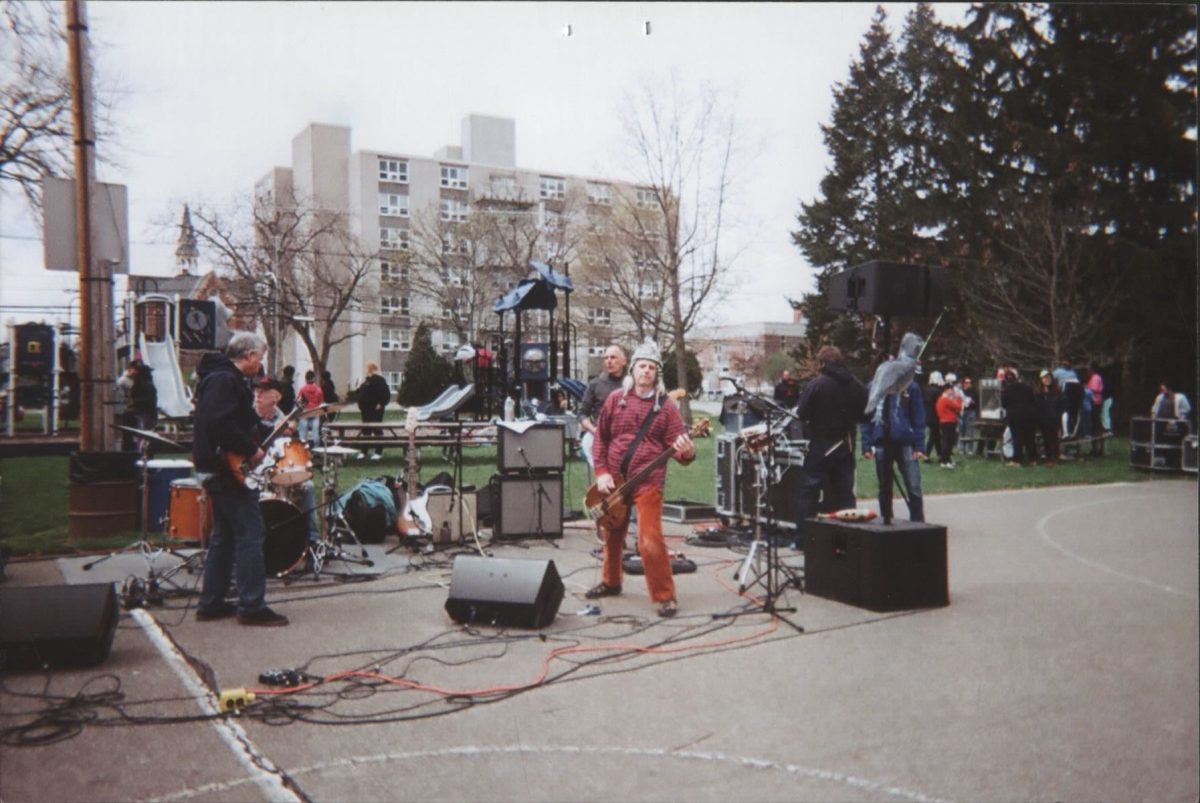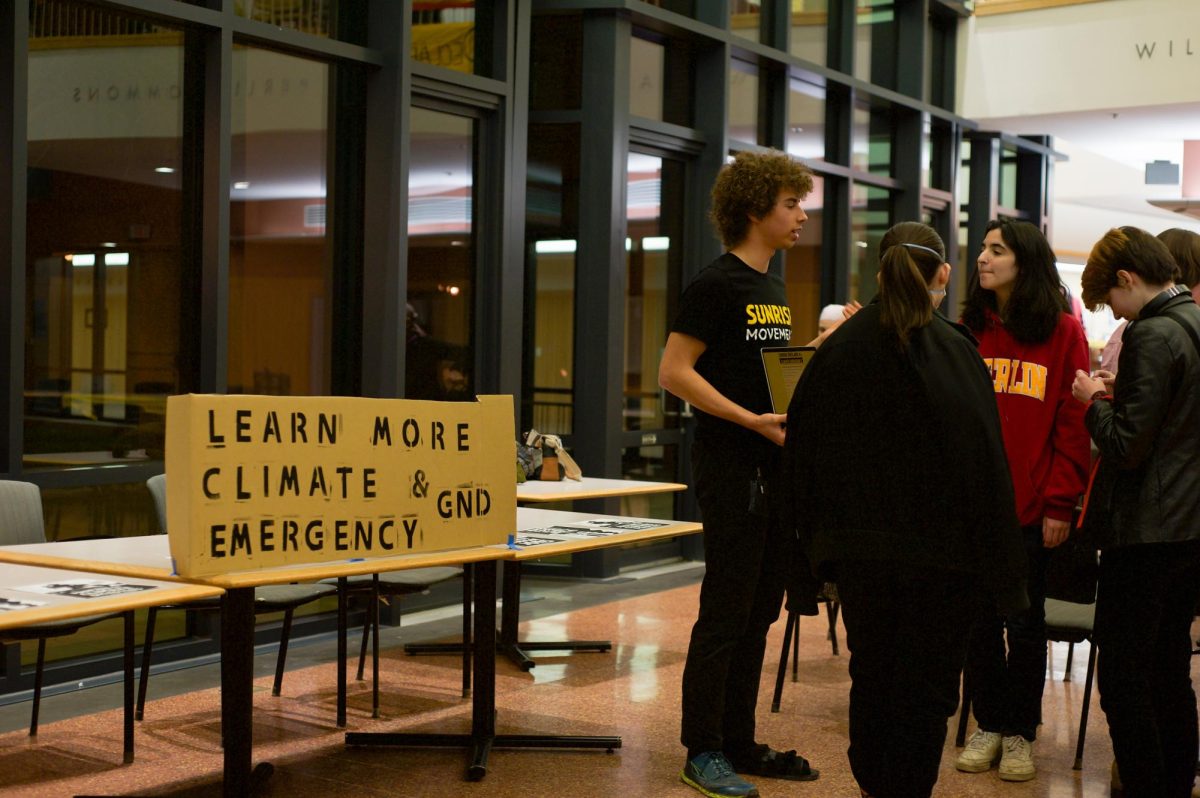Alix Spiegel, OC ’94; EJ Dickson, OC ’11; Ben Calhoun, OC ’01; Michael Duffy, OC ’80; Jon Hamilton, OC ’83 — the lineup of journalists produced by Oberlin is impressive, despite the newness of the Journalism Integrative Concentration, which launched in fall 2020. So then, why does Oberlin seem to generate so many acclaimed reporters?
Jan Cooper, John C. Reid associate professor of Writing and Communication and English, put together the proposal for the JIC prior to fall 2019 alongside Professor of English and Cinema Studies Geoff Pingree, who acts as the JIC faculty advisor, and Professor of Hispanic Studies Sebastiaan Faber. Before the concentration was created, courses related to journalism included Journalism Basics, which Cooper herself currently teaches, Literary Journalism, presently taught by Visiting Associate Professor of Writing and Communication Hal Sundt, OC ’12, and a handful of first-year seminars.
Beyond the College, Mike Telin, OC ’84, and Daniel Hathaway, both visiting teachers of Music Journalism, co-teach Introduction to Music Journalism in the Conservatory. The class, split about 50-50 between College and Conservatory students, boasts its own impressive repertoire of graduates working in journalism, from positions at NPR and The Boston Globe to social media manager at Carnegie Hall.
Oberlin’s first music journalism course was introduced 12 years ago, driven by the late Stephen Rubin, who died Oct. 13. Rubin oversaw the launching of the Rubin Institute for Music Criticism in 2011 alongside former Oberlin Conservatory Dean David H. Stull, OC ’89. The institute has since moved to the San Francisco Conservatory of Music, but the course on music journalism persists thanks to Telin and Hathaway.
Telin, bassoonist, and Hathaway, organist, are both members of the Music Critics Association of North America, an organization working to develop music criticism in the world of classical music. Additionally, they both run Clevelandclassical.com, where they work as music journalists to promote classical music in Northeast Ohio. Their course, though, extends beyond that canon and into Oberlin’s robust musical scene, often allowing students to choose the music they’re reporting on. More importantly, it teaches budding journalists how to convey the “why” of their critiques.
“There was a time where, if somebody didn’t like something, then it wasn’t good,” Telin said. “How to articulate that kind of nuanced writing, I think, is getting much better. Young people in general are becoming aware of that, and are aware that you can’t just say, ‘That’s really awful,’ because the answer is, ‘Why?’ and I think people are expressing the ‘why’ to their criticism much better than they used to.”
Journalism across disciplines has changed with the times. As publications move online and as artificial intelligence develops, there’s a fear among journalists that news will only be consumed through TikTok and an already shrinking field will cease to exist. And even if it doesn’t, we’ll only earn enough at, say, The Village Voice to live in a cardboard box in Tompkins Square Park. Maybe we’ll still need reporters, but arts journalism is especially dead. This is a conjecture I’ve heard — and believed, on my more somber days — many times since entering the newspaper world at 15 years old.
“Music has changed, and I think music journalism is changing — perhaps on a certain level, reluctantly,” Telin said. “In music journalism, there are often conversations about the ‘golden age,’ which may or may not be true — I think part of it is true. If you’re looking at any major media place, yes, there were three or four music journalists at the papers. However, what was being covered was only the big-ticket items and events. There was not a lot of space for your upstart group. Those were never covered, or, if they were, you were lucky to get one article a year. … If you start to dig into it, it wasn’t golden for everyone.”
Like many, Telin fell into journalism more by happenstance than anything, due to his background in arts administration and grant writing. But some, like Hathaway, have always gravitated towards the pen.
“I’ve been writing ever since I was probably in second grade,” Hathaway said. “I had a little neighborhood newspaper called the Inquiring Reporter in Topeka, Kansas. … If you spend your career in music, you end up writing a lot. You end up writing programs, you end up writing press releases, you have a lot of words behind you … [but] I don’t have any formal training in journalism.”
Sundt, who is featured in the Review’s Nov. 3 Off the Cuff and recently published Warplane: How the Military Reformers Birthed the A-10 Warthog, similarly became acquainted with journalism almost by accident. Sundt writes longform, literary pieces, and he refutes the claim that readers no longer have the attention span for anything longer than a short snippet.
“I feel like the pendulum is starting to shift back,” Sundt said. “More folks are wanting to read book-length works when, for a while, it seemed like in the ether that stuff was fading out. … A huge role for these publications, particularly on campus, is to help writers develop, [even if] maybe there are ebbs and flows in the reading patterns. … The journalism world has been fearing the future of journalism for a while, but it does feel like it continues to persist in an encouraging way.”
College fourth-years Hazel Feldstein and Ophelia Jackson are both completing the Journalism Integrative Concentration, both falling in love with the world of reporting. Although they did not enter college with the intent to pursue journalism, after taking courses like Journalism Basics with Cooper and Literary Journalism with Sundt, they realized their interest in the world of writing about others.
Feldstein currently acts as the JIC student assistant, coordinating events and sending newsletters to the extensive JIC email list. Feldstein previously co-hosted WOBC News and the news work group. She also created the Tappan Square Dispatch, a podcast run by students in the concentration. For Feldstein, the future is audio and the future is digital.
“Last fall, I got the opportunity to be a student reporter at the Online News Association’s conference in LA, and that was a really crazy experience,” Feldstein said. “I went to all these panels about what the future of journalism looks like. As the students in the newsroom, we were the ones being like, ‘Why are we putting this on Facebook? We should be putting this on TikTok and Twitter,’ and ‘That’s not how you format an Instagram story.’ … I met this really wonderful reporter — her name is Carolyn Burt. She works for the [Los Angeles] Times now, I believe, and she had a lot of really good things to say about what The Washington Post [and] LA Times are doing with TikTok, … turning news into digestible bites and learning how to use algorithms and trends to explain news.”
Jackson is currently the Writing Associate for WRCM 207, Literary Journalism. The JIC didn’t exist until the fall of her second year. She only picked it up this semester as an accompaniment to her individual major in Writing and Communication, once she realized she had taken all of the required courses for the JIC.
For Jackson, her relatively new love of journalism, spurred by the realization that it extends beyond cut-and-dried reporting, is akin to the feeling of jumping off a high dive as a little kid into cold water.
“One of the things that I really love about [journalism] is the way it exists at the intersection of three things,” Jackson said. “There’s a creative nonfiction element to it; there’s a social justice, social consciousness, and critical consciousness element to it; and there’s a research, academic element to it. … That’s what I love about it, to get to engage the parts of myself that are analytical and academic and creative and that are concerned for others on the large and small scale. … That would be my hot take on how we have so many journalists leave [Oberlin], but not so many journalists here.”
As her time as student assistant for the JIC comes to a close, Feldstein hopes to see more collaboration between campus publications to foster mutual growth in the world of student journalism.
Another project Feldstein and students like Jackson would like to see in the long term is an Integrative Concentration career fair where employers are brought to campus, given that an experiential component is a requirement toward completing many Integrative Concentrations.
“Oberlin’s history of journalists and literary journalists is incredible,” Sundt said. “I had emailed this one writer asking about their writing process [and] she wrote back at the end, ‘32 percent of all writers come from [Oberlin] as far as I can tell.’ I don’t think the figure itself is exact — I hope [ journalism] continues to thrive and everything, because there’s something about the place that really fosters journalism, even before [the] JIC.”
As the JIC grows each semester, even while some journalists bite their nails at the future of the industry, Cooper and other Writing and Communication faculty are actively discussing a not-too-distant reality where Oberlin offers a major for journalists, emphasizing media and the relevance of amplifying voices, current events, and the wacky things writers become obsessed with on their journeys.
